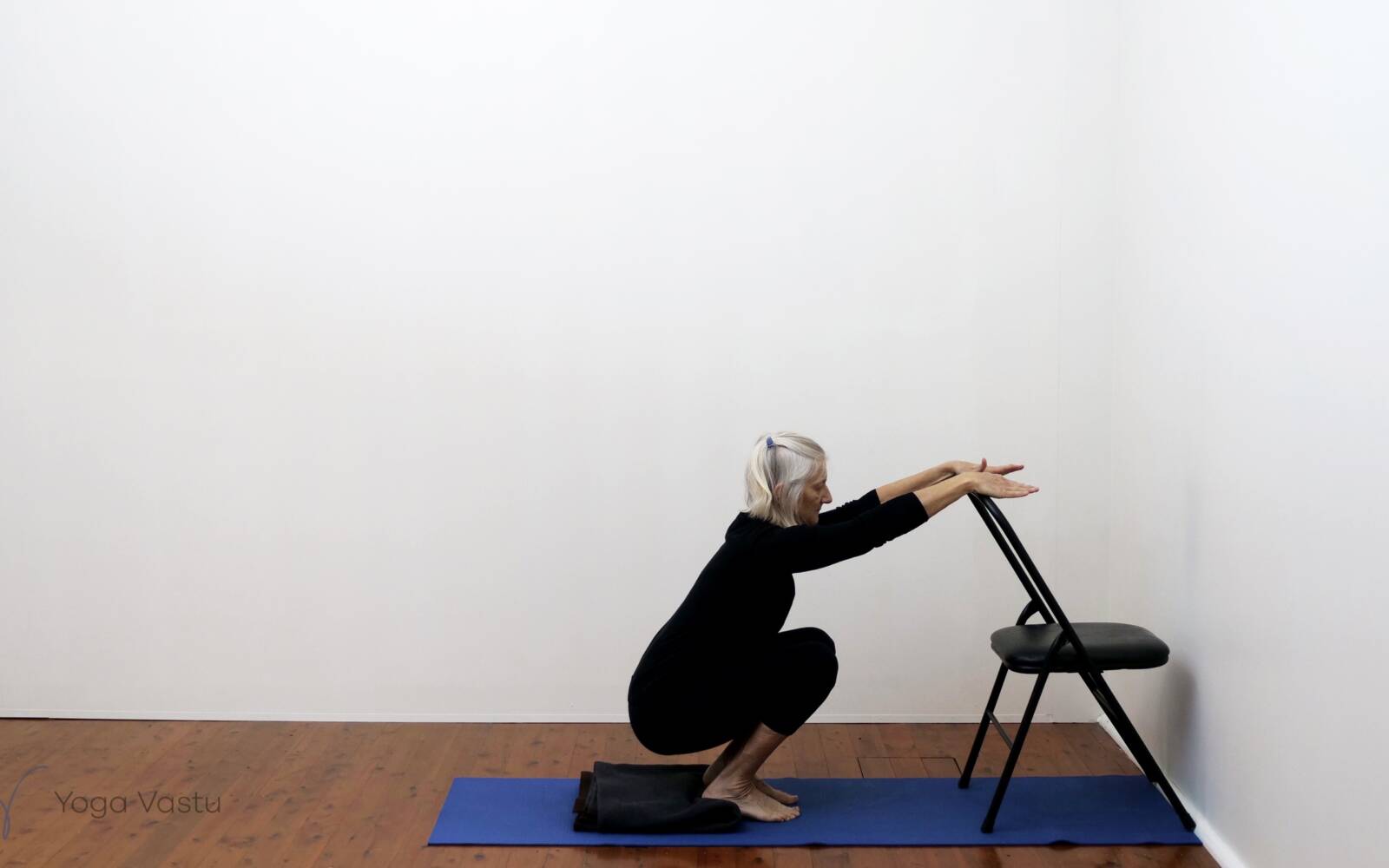How to perform Garland Pose
With your feet hip-width apart and your toes pointing out, squat down to capacity. In some variations, can keep your feet closer together and have your toes pointing straight ahead.
What is Malasana?
Malasana, also known as Garland Pose, is a good example of the blend of physical and spiritual benefits that yoga offers. This simple yet transformative seated squat exemplifies the fusion of stability and introspection, inviting practitioners to explore the depths of their bodies and minds.
What are its benefits?
The pose gently unfurls the hips, thighs, and ankles, fostering flexibility, which is essential for fluid movement throughout one’s practice. As the weight of the body settles into the heels, the ankles receive a gentle stretch, bolstering joint mobility. The groin and inner thighs are coaxed into a deep release, contributing to improved circulation and energy flow. The activation of the core muscles and the elongation of the spine create a foundation of stability, promoting a graceful posture.
By nurturing flexibility and strength in the lower back and pelvic region, the pose can help release the discomfort caused by a sedentary lifestyle. In a world often dominated by chairs and screens, Malasana encourages a dialogue between the body and the earth, counteracting the rigidity imposed by modern living and reestablishing a sense of grounding.
Malasana is also a gateway to introspection and emotional release. The deep hip opening, akin to a blooming lotus, symbolizes the shedding of emotional burdens. By anchoring the practitioner to the earth, Malasana connects with the root chakra, fostering a sense of security and grounding. This quiet moment of squatting invites reflection, beckoning the practitioner to let go of what no longer serves them.
When to practice Malasana
The timing of practicing Malasana can enhance its impact. In the morning, the pose can be a rejuvenating sunrise ritual, preparing the body for the day’s challenges. It awakens the muscles, gently coaxing them into mobility and warmth. In the evening, Malasana can become a bridge between the day’s activities and rest. As the sun sets, the pose encourages relaxation and introspection, setting the stage for a peaceful night’s sleep.
What poses does it go well with?
In a yoga sequence, Malasana effortlessly interacts with other poses. Transitioning from Uttanasana to Malasana creates a seamless flow that stretches the hamstrings while preparing the hips for the deep squat. Continuing from Malasana to Baddha Konasana is ideal when the practitioner is looking to achieve thorough hip opening, allowing the body to gently unfold.

